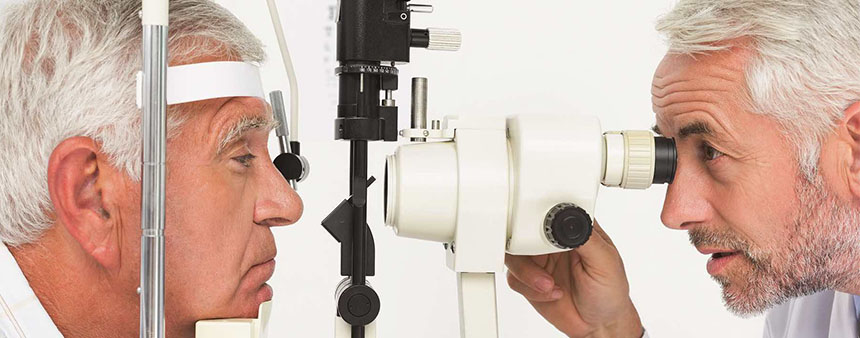Symptoms of cataracts and the best treatment

What is Keratoconus and what are the symptoms
2018-07-25
Supervision after refractive errors surgery
2018-08-15A cataract is a clouding of the lens in the eye that affects vision. Most cataracts are related to aging. Cataracts are very common in older people. By age 80, more than half of all Americans either have a cataract or have had cataract surgery. A cataract can occur in either or both eyes. It cannot spread from one eye to the other.
What is the lens?
The lens is a clear part of the eye that helps to focus light, or an image, on the retina. The retina is the light-sensitive tissue at the back of the eye. In a normal eye, light passes through the transparent lens to the retina. Once it reaches the retina, light is changed into nerve signals that are sent to the brain. The lens must be clear for the retina to receive a sharp image. If the lens is cloudy from a cataract, the image you see will be blurred.
The lens lies behind the iris and the pupil. It works much like a camera lens. It focuses light onto the retina at the back of the eye, where an image is recorded. The lens also adjusts the eye’s focus, letting us see things clearly both up close and far away. The lens is made of mostly water and protein. The protein is arranged in a precise way that keeps the lens clear and lets light pass through it.
But as we age, some of the protein may clump together and start to cloud a small area of the lens. This is a cataract. Over time, the cataract may grow larger and cloud more of the lens, making it harder to see.
Researchers suspect that there are several causes of cataract, such as smoking and diabetes. Or, it may be that the protein in the lens just changes from the wear and tear it takes over the years.
What are the symptoms of a cataract?
The most common symptoms of a cataract are:
- Cloudy or blurry vision.
- Colors seem faded.
- Headlights, lamps, or sunlight may appear too bright. A halo may appear around lights.
- Poor night vision.
- Double vision or multiple images in one eye. (This symptom may clear as the cataract gets larger.)
- Frequent prescription changes in your eyeglasses or contact lenses.
These symptoms also can be a sign of other eye problems. If you have any of these symptoms, check with your eye care professional.
How is a cataract treated?
The symptoms of early cataract may be improved with new eyeglasses, brighter lighting, anti-glare sunglasses, or magnifying lenses. If these measures do not help, surgery is the only effective treatment. Surgery involves removing the cloudy lens and replacing it with an artificial lens. A cataract needs to be removed only when vision loss interferes with your everyday activities, such as driving, reading, or watching TV.
Cataract surgery using new surgical techniques
Although conventional procedures for cataract surgery improve vision in patients. However, new methods of cataract surgery, such as the Refined TransPRK method, used by Dr. Adib Moghaddam, have had very successful results, and, in addition to reducing pain and discomfort compared to other surgical procedures, the quality of patient’s vision after surgery is severely Increasing.
The Refined TransPRK is a non-invasive surgical procedure without the need for cutting and bloodshed that uses laser energy to treat cataract. Because transcriptional transfusion surgery is a non-invasive method, inflammatory responses and photosensitivity to post-surgical radiation are reduced, and therefore, the possibility of pain and blurred vision of patients after surgery is significantly less than other methods.
Reference:
https://nei.nih.gov/health/cataract/cataract_facts




